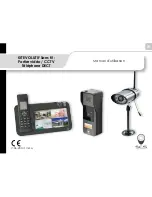
Section 5. Programming the Datalogger
5-5
If any of these four digits is greater than zero then data is available.
Values per repetition = 2
5.2.7 Command 6: Flush Transmit Buffer
This command flushes the SDM-SIO4 transmit buffer of data it is waiting to send.
Values per repetition = 0
5.2.8 Command 7: Activate Command Line
This command simulates pressing the push button on the SDM-SIO4 which
activates the command line mode on the port determined by the mode. If the mode
parameter of P113 is 0, the command line will be on the currently defined port. If
the parameter is 1-4, then the command line will be on the port number specified.
Values per repetition = 0
5.2.9 Command 8: Poll Tx Buffers for Data
This command polls the Tx buffers to see if they have data.
This command has no additional options after the command. The SDM-SIO4
returns one Campbell Scientific floating point number to indicate if it has data as
below:
Port 4 has data
| Port 3 has data
| | Port 2 has data
| | | Port 1 has data
| | | |
x x x x
If any of these four digits is greater than zero then the buffer has data.
Values per repetition = 1
5.2.10 Command 9: Flush Converted Data Buffer
This command flushes the converted data buffer of data that is available for the
datalogger to collect.
Values per repetition = 0
5.2.11 Command 66: Send Single-Byte Data to Datalogger
This command requests the SDM-SIO4 to send single-byte binary data, which is
written one byte per location for all values/rep. If no data is available then the digit
255 is stored in the input location. This command could be used, for example, to
get data from filter strings of type
c
(read any byte) and
Nn
(read ‘n’ bytes) – see
Section 3.
















































